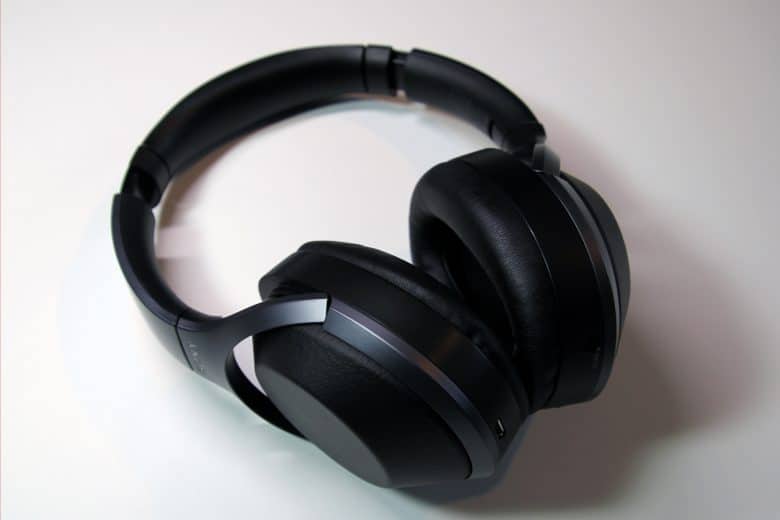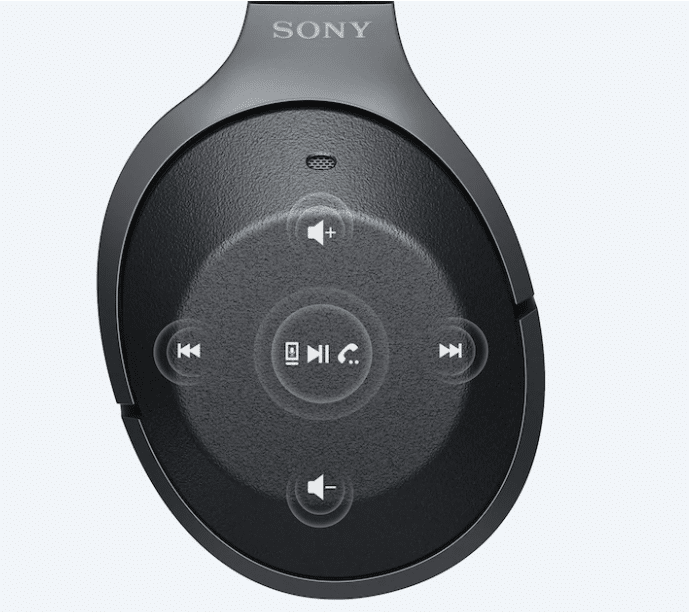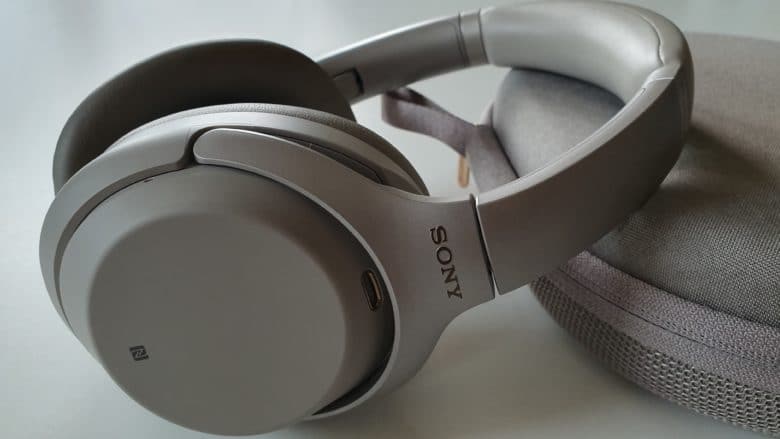
Sony already played with the WH-1000XM2 in the upper class and could also impress in our test. Now we have the successor model WH-1000XM3 on the table and are curious what the further development can do. Industry connoisseurs will know that this will be the crown of noise cancelling headphones.
In our review, we start with the two most important comparisons and continue with the isolated review.

… And what about Bose?
One cannot avoid this question when making a purchase decision. There is hardly a review that doesn’t mention Bose’s QC 35. Our test for the QuietComfort 35 can be found here. Sony and Bose are usually superior to the competition and for a long time they fight a head-to-head race for the industry leader. The WH-1000XM3 is to be seen also as answer to this competition. For Sony, this launch was about nothing less than the crown of ANC headphones. Bose’s new 700 model disappointed many fans, which is why the QC 35 II has to be used as a comparison product.
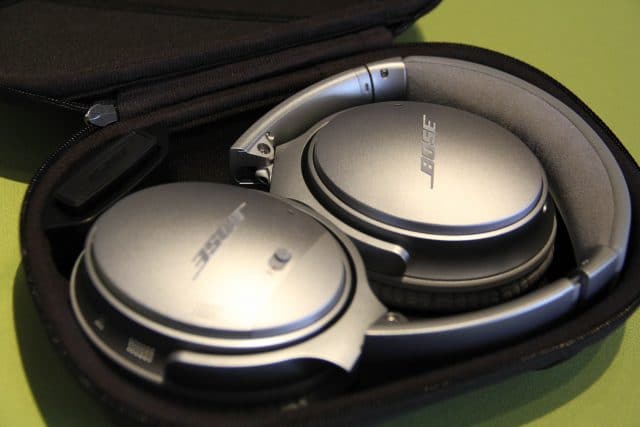
Of course every user has his individual preferences, especially in point design or sound tastes differ. One thing is certain, both competitors offer top products for their money. After this disclaimer, the comparison begins:
- more powerful bass
- better noise reduction
- superior app with more features (like functions like Adaptive Sound Control)
- better overall sound
- USB type C (better battery life, significantly faster charging times)
- (-) poorer speech quality of the microphone (e.g. wind)
- (-) cannot be used with several devices at the same time (vs. several for Bose, such as laptop and mobile phone simultaneously)

The Japanese have managed to catch up with Bose in terms of design and wearing comfort in particular and are now roughly equal in value here. But in Puncto Design I would just leave Bose the preference, because the ear cups are not so clumsy and the colors and surfaces are richer.
Is the new model worth it?
Sony did a lot right with the WH-1000XM3 compared to the XM2. The most important thing is that the Japanese didn’t touch the proven features and there are no “bad improvements”. The innovative operation with the hand on the auricle, for example, has been left as it is and only functions such as Alexa or Google Assistant compatibility have been added. Only nuances have changed in the design, both in the earphones and in the bag (box), which is included again.
For a relatively long time it was still worthwhile to consider the XM2 when buying, because it was in part much cheaper. It’s by no means as if the XM3 had replaced its older sister. Both were considered as competing products for a relatively long time. At the moment, however, the prices are adjusting more and more, which is why at this point in time (except used purchase!) the previous generation is not advisable. It is exciting that Sony takes its own crown with some characteristics. So far, no competitor has been able to get close to noise suppression, and here it has even been improved.
These are the most important features of the XM3 compared to its predecessor:
- Slightly revised, better design (also of the box). The material of the ear pads on the XM2 disturbed me especially
- USB type C: new standard for faster loading
- Revised noise cancelling (slightly better)
- Revised sound (slightly better)
- Slightly lighter and more comfortable to wear
- New additional features via App
The Sony WH-1000XM3 out of the box
In addition to the headphones, the scope of delivery includes a transport case, a short USB type C charging cable, a mini audio cable and an aircraft adapter. The box looks good, is compact and offers good protection during transport. A quick start guide gives a good visual overview of the usability of the noise cancelling headphones. Connection with Bluetooth is quick and easy. The on-switch has to be pressed for about 6 seconds and you can pair the device and get started.
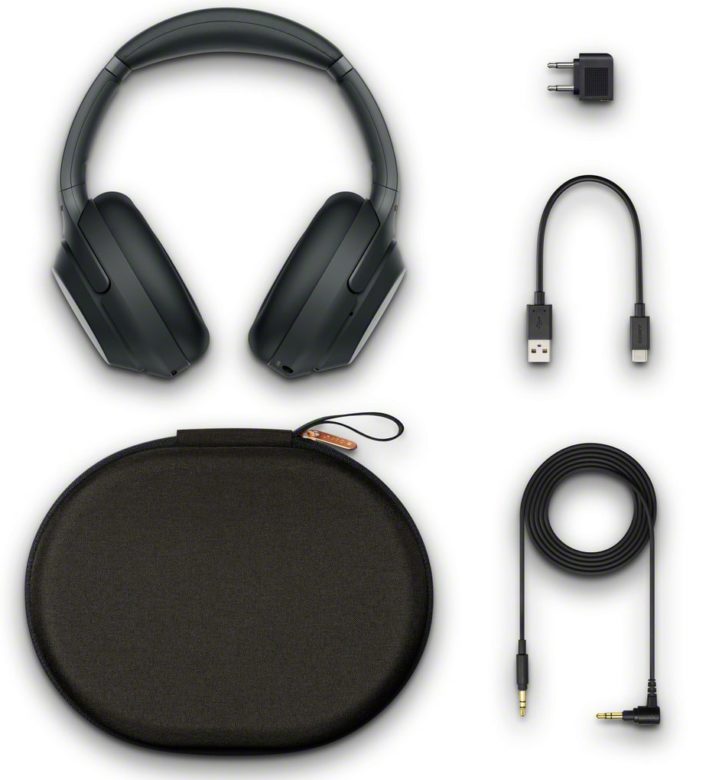
From outside
We like the overall design very much. Here some criticisms of the XM2 have been implemented. The XM3 is available in the different colors silver and black, whereby one can argue about the question whether this is really silver. Usually you don’t do anything wrong with matt black. Only a few small bronze-coloured elements loosen up the simple dark design. The headphones are suitable for office use and chic. The quality workmanship is not only convincing visually, but also in the bending test. You really have to put your foot down to get the headphones broken. The ear cups can be turned by approx. 130 degrees, folded and tilted slightly.
The design is also hardly disturbed by buttons. There are only two buttons on the underside that protrude a few millimetres. The operation is otherwise done by touching or wiping the auricle.
The wearing comfort
… can very quickly be summed up as “excellent”. The padding on the head is nice and thick. The headphones are light with approx. 250 g and sit well on. The ears are completely enclosed by the earpads and only touch the well padded inside a little. Like its predecessor, the WH-1000XM3 are placed next to the ears (over-ear). The closed ear cushions are soft and also suitable for spectacle wearers. The headphones hardly press and yet sit firmly on the head, so you can go jogging with them. Unfortunately, it’s not enough for headbanging.

Apart from the considerable gain in comfort due to active noise reduction during flights, for example, the headphones are also very comfortable to wear on their own. During longer sessions you don’t get a feeling of pressure on your ears, because the padding is like a comfortable pillow. But after more than 5 hours you should take a break.
Noise Cancelling
In an ever louder and more hectic environment in the cities, noise suppression is certainly an oasis for those in need of rest. Whether in the everyday railway commuter jungle, in the airplane or in the park… Once you’ve got the luxury of good noise cancelling, it’s hard to do without it. Filtering the ambient noise reduces stress and improves the enjoyment of music considerably.
Sony even outbid the in-house best noise cancelling with the WH-1000XM3. The overall package of the best NC technology together with the numerous different configuration levels and functions in the app are convincing. The test object filters out sounds best, without any ifs or buts – it’s quiet. However, the headphones do not achieve silence by physically shielding the earcups, but through their NC technology. Depending on preference, this approach could be perceived as unnatural or annoying with the generated “counter-noise”. If the NC is active, you can no longer even hear yourself talking.

With “adaptive noise reduction”, the microphones pick up the ambient noise and intelligently adjust the noise cancelling to it. In practice, this means that when you get on a train, for example, the headphones perceive the changed background noise and select the appropriate suppression mode. However, the interruptions when switching over interfere with the smooth enjoyment of the music.
NC does not mean to be “permanently deaf”. You can adjust and turn off the function and even amplify ambient sounds if you wish. This also works easily when listening. If you place your hand on an earpiece, you can clearly follow conversations. The range extends from absolute silence to a hearing aid, so to speak.

The App
The headphones are enhanced with the Sony Headphones App for Android and iOS. The app is primarily suitable for adjusting noise suppression. But there are also numerous other functions to play around with. Going into this in detail would be beyond the scope of this article. It is a fact that not all functions are equally useful. Some configurations make the headphones worse, but can be useful for some users. The most useful thing for me, besides the NC, is that you can set custom equalizers, control the sound position, and reassign the Assistant button. The app is not necessary to use the headphones.
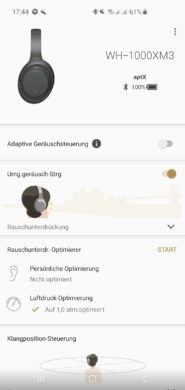
You can use the NC key to enter voice commands for Google, Alexa, Siri and Co. For example, you can use your headphones to read out calendar entries, create a note, etc. on the go. This is also a practical option that is worth a plus point.
The most important thing: the sound
… is also excellent. In this category, we have also made some improvements compared to the predecessor model. The 40 mm sound drivers deliver a top sound image, now also with a lot of “wumms”. The strength of the sound can be seen in different frequency ranges, but the powerful bass is the most positive compared to the competition. If you have already tested several headphones, you will recognize good sound relatively quickly and appreciate it. Studio headphones are a bit more than that, but even with amplifiers they have completely different impedances and not so much compact technology, so the comparison is a bit lame.

The sound is precise and multi-faceted. If you are looking for something to criticize, you will only find it in the highs. Anyway, not everyone will like the sound from audio including “NC mixing”. Without NC the fullness is almost lost, the headphones could shield even more noise by their ear cushions. The best thing to do is to try out whether you can handle the “counter-noise” well. In quieter passages and title changes it can be a bit annoying.
The frequency range of 4 – 40,000 Hz is actually already “overkill” for people. But it’s nice to know that even dolphins in the higher range could still enjoy sounds with the XM3. The technical data can be found at Sony here.
Equipped with the latest Bluetooth technologies and DSEE HX optimization standard, you can also enjoy music without a cable. The stereo cable can be used to enhance the sound even further. However, the improvement through the cable is only essential for sound fans. Most people will be fully satisfied with Bluetooth.

Where is the hook on the WH-1000XM3?
Let us now come to criticism, because, as you know, nothing is perfect. Big mistakes can hardly be found, but when it comes to the crown, you can also be a little more picky.
Although I find the price for the offered performance and quality justified, we are in the upper class here. The Sony WH-1000XM3 are not affordable for everyone and there are cheaper products on the market that can satisfy many users.
Physical buttons are hard to find on headphones. That’s why the operation is a bit difficult. It can happen that you accidentally press the button on the earphones. In addition, you squeeze yourself out every now and then. Although I think the touchpad is the best solution, it’s not quite perfect yet. There have been reports of disturbances in very cold weather that we haven’t been able to confirm yet. Also, only one Bluetooth connection to a device is possible at a time. Here we are already at the biggest point of criticism. Listening to music on a laptop and then listening to a voice message on a mobile phone is not possible here, too bad!

Small criticisms
Competitor products also have other functions in the petto. The music could, for example, stop playing automatically when the headphones are turned off, as with Surface headphones or Bowers and Wilkins PX. The WH-1000XM3 avoids the lack of this function by amplifying the ambient noise (e.g. voices) by placing hands on the operating shell, but it should be supplemented.
The USB-C charging cable is unfortunately no longer than a fork. If you have a slightly higher socket or no storage space in the immediate vicinity, the headphones will dangle in the air. Probably you have a longer cable of smartphone or the like lying around and the small size is better for transport in the box, but as I said: high level means high demands and that can disturb users.
Some of the criticisms of the predecessor model continue here. The headphones cannot simply be thrown into a case, but have to be folded into a certain position to find room in the hardcase. With more frequent unpacking and packing, I find this unpragmatic, but the protective function is therefore high. And we still have one more thing: The speech feedback when switching on and off is still a bit too 32-bit in sound resolution.
Fulness
As a rule, the longer it takes to find criticism, the better the product. I had to look very critically during the test months in order to find flaws. The result for the Sony WH-1000XM3 is correspondingly positive. They score with good design, top sound, best noise cancelling and a remarkable number of features about the app. Compared to its main competitor Bose, there isn’t much going on, but in our opinion Sony has managed to win the race surprisingly clearly with the further development of the popular series. To answer the “research question” of our article: Yes, Sony’s WH-1000XM3 is currently the king of noise cancelling headphones. If the price doesn’t limit you, you can access it with a clear conscience.
Sony WH-1000XM3
Sound Quality
Noise Cancelling
Design
Workmanship
Features
Value for Money
Excellent!
The headphones can clear all areas. Only the design and the sound quality, which suffers somewhat from the strong NC, still have wafer-thin air at the top. In the other areas, the WH-1000XM3 sets the standard.
